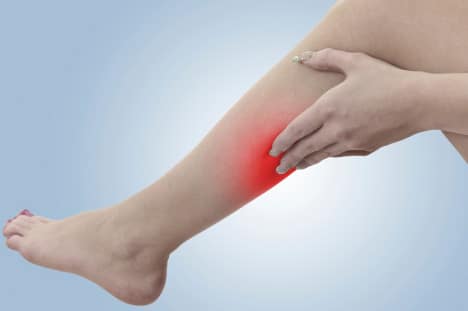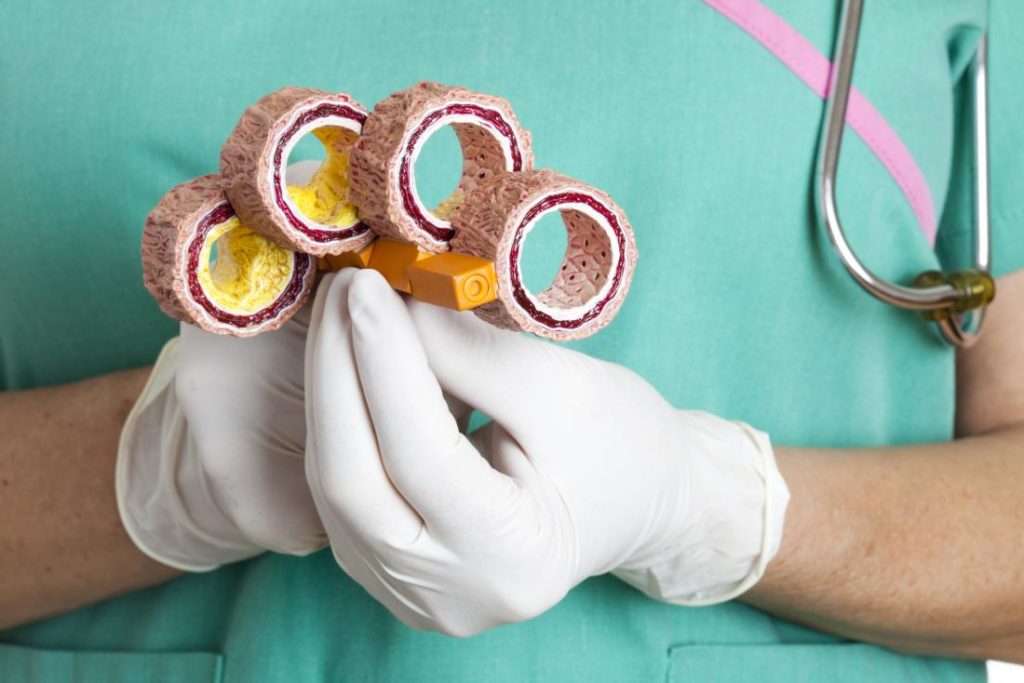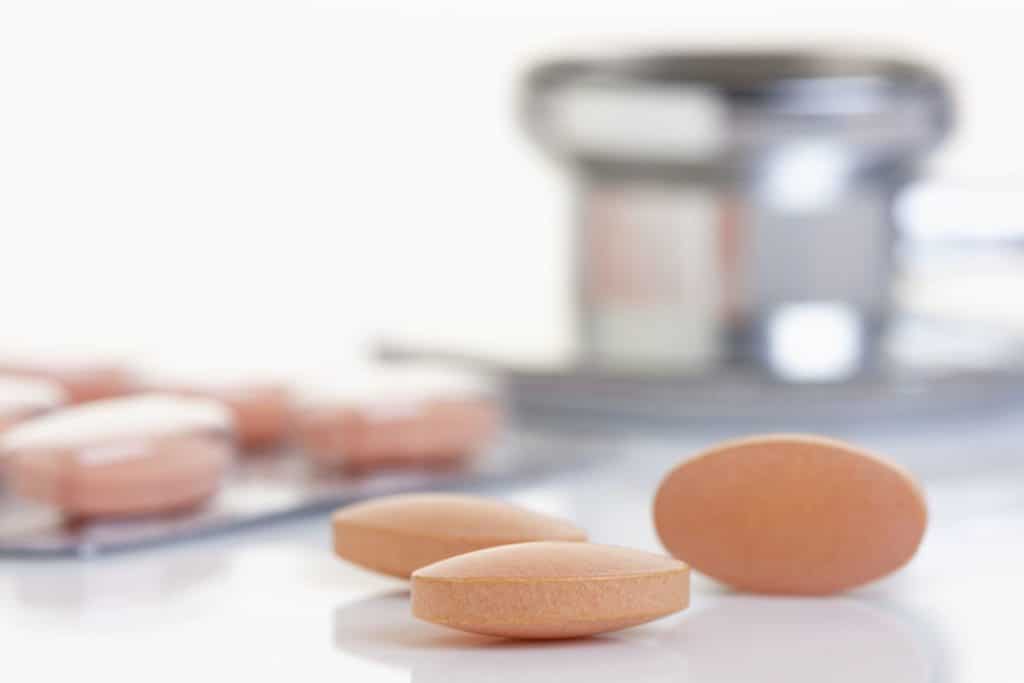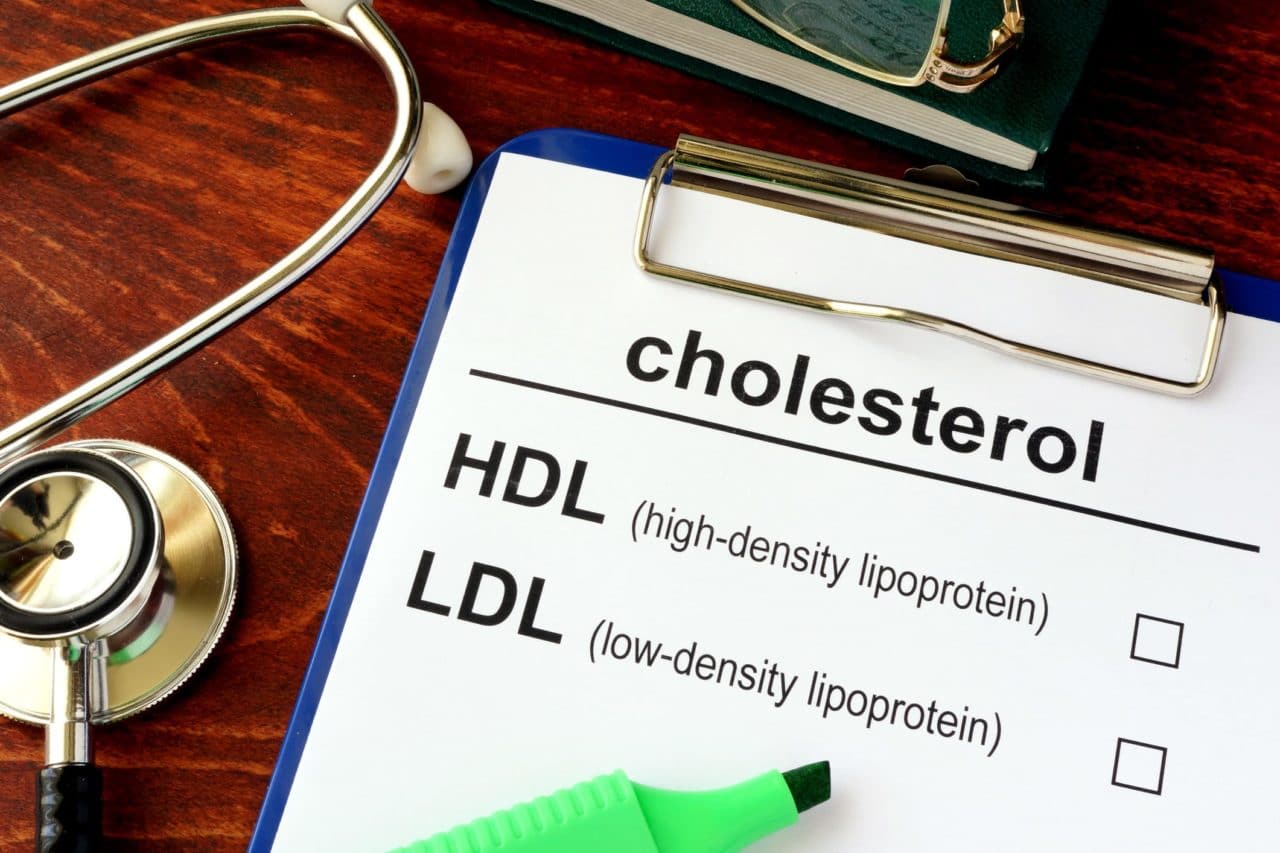Overview: High Cholesterol and PAD
Cholesterol is a type of fat (and a natural wax-like substance) mostly synthesized by your body, where it plays a role in various bodily processes, one of which is the formation of vitamin D. However, we also consume cholesterol in diet, and when taken in excess, it can build up in the walls of your arteries, creating problems.
In the blood, cholesterol is carried on proteins, and hence, this lipid (fat)-protein combo is known as a lipoprotein. There are various types of lipoproteins, but the two most important are low-density lipoprotein cholesterol, better known as LDL-C, or “bad” cholesterol and high-density lipoprotein cholesterol (better known as HDL or “good” cholesterol). The LDL-C is the one that transports cholesterol to your body tissues where it starts building up in your arteries and contributes to the artery-clogging plaque. Thus, it’s the high levels of LDL that increase your odds of developing heart and blood vessel disease. LDL-C is not to be confused with HDL that also carries cholesterol but in the opposite direction—i.e., from your bloodstream and the artery walls to your liver so it can be flushed out from your body. High HDL is beneficial for your health as opposed to high LDL levels.
So, this article focuses on the bad or LDL cholesterol regarding its role in Peripheral Arterial Disease (PAD) with the terms LDL and cholesterol used interchangeably.
How Does High Cholesterol Lead to PAD?
High blood cholesterol is one of the major risk factors and a key driver of PAD—which is atherosclerosis. This is a process in which fatty material called plaque builds up inside your arteries, such as those supplying the legs and feet. The affected arteries of your legs harden and narrow, limiting the flow of oxygen-rich blood to the respective areas. The reduced blood supply thus gives rise to the classical “intermittent claudication (calf pain on walking),” of PAD.

Atherosclerosis, or the plaque buildup, is not a one-step process. Rather, it consists of a series of steps that slowly culminate in the complete blockage of blood flow to the affected arteries. It’s not like your LDL becomes high and starts damaging your arteries right away. In fact, atherosclerosis doesn’t cause any symptoms for decades. Where it’s hard to determine the onset of atherosclerosis inside your body, it’s easy to spot and address factors like high cholesterol to prevent them from affecting your arteries.
Let’s explore how too much cholesterol damages your arteries!
1. Oxidation of LDL
LDL-C that builds up to pretty high levels gets oxidized (or damaged by interacting with highly reactive molecules called free radicals). This oxidized form of LDL is the actual initial insult preceding a cascade of events that cause the formation and progression of atherosclerotic plaques as detailed below.
2. Foam cell accumulation due to excess cholesterol
A normal artery wall comprises three layers: an “inner” layer called endothelium, surrounded by a middle muscular layer, and then a tough “outer” layer to protect the artery. The endothelium is the most important, as oxidized LDL tends to damage and then breach this layer. At first, your body attempts to counter the invasion of LDL-C by stimulating specialized immune cells called macrophages. These cells are predators and will devour the LDL-C after which they are transformed into cholesterol-laden “foam cells” that become localized to the artery wall.
When seen by the naked eye, LDL-enriched foam cells are visible as fatty streaks in the vessel wall. These fatty streaks represent the earliest visible hallmark sign of the key trigger of PAD—which is atherosclerosis.
3. Plaque formation in the artery wall
As time passes by, the fatty streaks expand—in response to which, a fibrous yellowish-white capsule termed as a “plaque” begins to surround the fatty deposits to protect the artery.

4. Progression of the plaque
If high cholesterol levels are still not treated, the plaque will continue to grow and encroach on to the inner lining of the artery. The artery, on the other hand, will still try its best to maintain the flow of blood through it. For instance, owing to its elasticity, the artery will stretch out to preserve its patency and increase blood flow when needed. However, the artery only has a limited capacity to expand, after which the growing plaque takes over and eventually intrudes into the inner opening of the vessel. The diameter of the artery thus reduces greatly, making it hard for the blood to get through the vessel. Moreover, calcium may deposit within the plaque, further stiffening the artery. At this stage, some people may start experiencing the physical symptoms of PAD.
5. Rupture of the plaque leading to a blood clot
With still high LDL-cholesterol levels, the plaque will keep progressing. However, since the arterial opening has already started to narrow, the plaque encroachment will now only add up to the pressure at the site of narrowing. The increased pressure, in turn, may damage the capsule enveloping the plaque which may then break open leading to a blood clot. The clot can block a blood vessel feeding your legs and feet, resulting in PAD symptoms.
The Key Takeaway
So, you see how too much LDL-C can have a profound negative impact on the health of your arteries and lead to PAD. Nonetheless, an ounce of prevention is worth a pound of cure. Therefore it’s is crucial to keep your lipid levels under control before they can rise high enough and start affecting the health of your arteries. Be sure to have your cholesterol checked at regular intervals and addressed as needed. Taking a vascular-friendly diet and staying physically active also significantly benefit your cholesterol levels and eventually, the health of your arteries. If need be, your doctor may also recommend a cholesterol pill, but remember to stick to the treatment so your arteries can stay clean, unclogged, and free of disease.

Peripheral Artery Disease Screening
If you think you, a family member or friend has the symptoms of PAD, it is important to confirm the diagnosis and seek treatment. The experts at Precision Vascular and Interventional would be happy to discuss PAD with you in person. Book an appointment today by calling 214-382-3200 or complete the form below.
This information is not a substitute for professional medical advice. Prior to starting any new treatment or questions regarding a medical condition, always seek the advice of your doctor or other qualified health provider.
Precision VIR serves the DFW area including Dallas, Fort Worth, Carrollton, Richardson, Garland, Mesquite, Highland Park, University Park, Park Cities, Plano, Frisco, McKinney, Arlington, Irving, Grand Prairie, Denton, Lewisville and all of North Texas.

